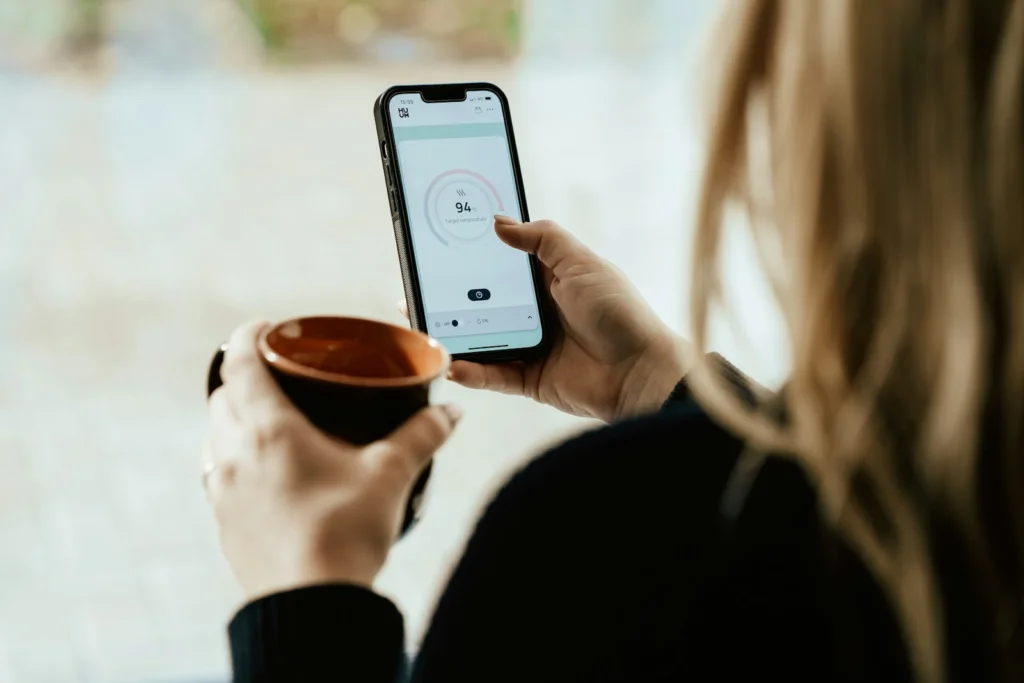
You’re trapped in a cycle that’s hijacking your attention every few minutes, and I can tell you from experience that breaking free requires more than just willpower. Your phone has become a digital leash, pulling you away from conversations, work, and peace of mind through carefully designed triggers that exploit your brain’s reward system. The solution isn’t going cold turkey—it’s understanding why you reach for that device and systematically dismantling the invisible forces that control your behavior.
Understanding the Psychology Behind Phone Addiction
Why do you reach for your phone the moment you wake up, even before your feet hit the floor? I can tell you it’s not willpower failure—it’s your brain’s reward system working against you.
Your phone triggers dopamine releases through unpredictable rewards, just like slot machines. Each notification creates anticipation, and that anticipation becomes addictive. I’ve never seen a device so perfectly engineered to capture attention.
You’re also fighting FOMO—fear of missing out. Your brain interprets every unchecked notification as potential danger or opportunity. This creates anxiety loops that demand constant checking.
The variable reward schedule makes it worse. Sometimes you get exciting messages, sometimes nothing. This unpredictability strengthens the compulsion because your brain can’t predict when the next “hit” will come.
Understanding these emotional triggers is the first step to breaking free from reactive phone checking and transforming into a more strategic, intentional user.
Identifying Your Personal Phone Checking Triggers
Before you can break the checking habit, you need to identify what specifically drives you to reach for your phone. I can tell you from experience, most people grab their devices during specific emotional states or situations. You’re likely checking when you’re bored, anxious, lonely, or avoiding something uncomfortable.
Pay attention to your patterns for three days. Notice when you reach for your phone – are you standing in line, feeling stressed at work, or sitting through awkward silences? I’ve never seen someone successfully reduce phone usage without first recognizing these triggers.
Write down each time you check and what you were feeling beforehand. You’ll discover your personal triggers, whether it’s procrastination, social anxiety, or simple habit loops tied to specific locations or times of day. Remember that each time you reach for your phone, you’re seeking that dopamine surge from notifications and engagement, which operates like any other addiction and makes breaking the habit more challenging.
Creating Physical Barriers to Reduce Access

The simplest way to reduce phone checking is making your device harder to reach. I can tell you from experience, distance creates powerful friction that breaks automatic habits.
Start by charging your phone in another room overnight. This single change eliminates morning scrolling and late-night checking. During work hours, place it in a drawer or bag across the room. The extra steps required to grab it give you time to question whether you actually need it.
I’ve never seen someone consistently check their phone when it’s physically inconvenient. Create deliberate obstacles: use a phone safe with a timer, leave it in your car during meetings, or store it upstairs while working downstairs. These barriers force conscious decisions rather than mindless reaching.
Keeping your phone out of the bedroom also supports better sleep quality by eliminating the blue light exposure that can suppress your body’s natural melatonin production before bedtime.
Optimizing Your Phone Settings and Notifications
Notifications act like digital leashes, yanking your attention away dozens of times each day. I can tell you that reclaiming control over these interruptions will transform your focus immediately. Your phone’s default settings work against you, designed to maximize engagement rather than your productivity.
Take charge by implementing these notification strategies:
- Turn off all non-essential app notifications, keeping only calls and critical messages
- Enable “Do Not Disturb” mode during focused work periods and sleep hours
- Remove red notification badges that create visual anxiety and urgency
- Schedule specific times for email notifications instead of receiving them instantly
- Use grayscale mode to make your screen less visually appealing and addictive
I’ve never seen anyone regret reducing notifications. You’ll immediately notice fewer impulses to check your device, giving you back precious mental bandwidth. Starting with micro habits like turning off just one app’s notifications at a time minimizes the cognitive load and reduces your brain’s natural resistance to this new pattern.
Establishing Phone-Free Zones and Time Blocks
Creating physical boundaries around your phone use works better than relying on willpower alone. I can tell you that designating specific areas and times as phone-free zones transforms your relationship with technology instantly.
Start with your bedroom—make it a complete no-phone sanctuary. Charge your device in another room, use an analog alarm clock, and watch how your sleep quality improves within days. Your dining table should be another sacred space where phones don’t belong.
Time blocks work equally well. I’ve never seen anyone regret implementing a strict no-phone policy from 8-10 PM for family time or focused work. Set clear boundaries during meals, exercise, and conversations. Consider establishing a technology-free zone during your early morning hours to create moments of tranquility and mindfulness before the day’s demands begin. When you control where and when your phone exists in your space, you reclaim your mental freedom and decision-making power completely.
Developing Alternative Habits and Coping Strategies

When you reach for your phone out of habit, you need something else to grab instead—and that’s where replacement behaviors save the day. I can tell you from experience, your brain craves that instant stimulation, so you’ve got to feed it differently.
The key is choosing activities that engage your hands and mind simultaneously. Here’s what actually works:
- Squeeze a stress ball or fidget toy – keeps your hands busy during meetings or downtime
- Do 10 push-ups or jumping jacks – transforms nervous energy into physical strength
- Write three things you’re grateful for – rewires your brain toward positivity
- Take five deep breaths with eyes closed – reduces cortisol and refocuses your attention
- Drink a full glass of water – hydrates you while creating a mindful pause
These aren’t just distractions—they’re power moves. Movement manufactures endorphins, serotonin, and GABA to combat anxiety and create a natural high that far exceeds any phone notification.
Using Apps and Tools to Monitor and Limit Usage
Although willpower alone rarely wins the battle against phone addiction, technology can actually help you fight technology. I can tell you from experience that screen time tracking apps become your secret weapon when you’re serious about reclaiming control.
Start with your phone’s built-in tools—iPhone’s Screen Time or Android’s Digital Wellbeing. These show you exactly where your time disappears, and I’ve never seen someone check these stats without feeling shocked. Set app limits that actually bite, not gentle suggestions.
For stronger measures, try apps like Freedom or Moment that block distracting apps entirely. Cold Turkey locks you out completely during focus periods. The key is choosing tools that match your commitment level—if you’re not ready for real restrictions, you’ll just disable them when temptation strikes.
Consider turning phone usage reduction into a tracked habit using apps like Habitica, which gamify daily routines and provide experience points for completing goals like staying off your device.
Building Long-Term Mindfulness and Digital Wellness Practices
Real change happens when you stop treating phone addiction like a problem you can solve with a quick fix and start viewing it as part of a broader relationship with technology that needs ongoing attention. I can tell you from experience, building sustainable habits requires consistent daily practices that strengthen your mental discipline.
- Practice intentional breathing before reaching for your phone – create a three-second pause
- Establish sacred phone-free zones in your bedroom and during meals
- Schedule regular digital detox periods weekly, starting with two-hour blocks
- Develop alternative dopamine sources through exercise, reading, or creative hobbies
- Track your progress daily with simple awareness check-ins
I’ve never seen anyone achieve lasting control without making mindfulness their foundation, not their afterthought. Your circadian rhythm responds powerfully to consistent daily routines, which is why establishing regular phone-free practices at the same times each day will strengthen your overall digital wellness over time.
Conclusion
Breaking free from constant phone checking isn’t easy, but you’ve got the tools now. Start with one strategy that resonates most with you, whether it’s creating physical barriers or establishing phone-free zones. I can tell you that consistency matters more than perfection. You’ll slip up sometimes, and that’s normal. Keep pushing forward, stay patient with yourself, and recall that reclaiming your attention is worth every effort you put in.





Leave a Reply